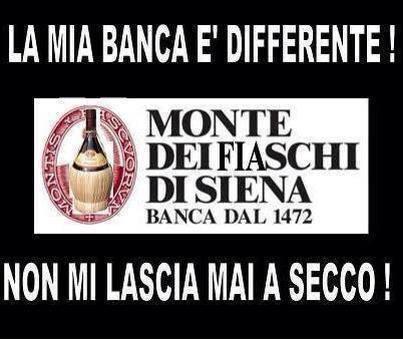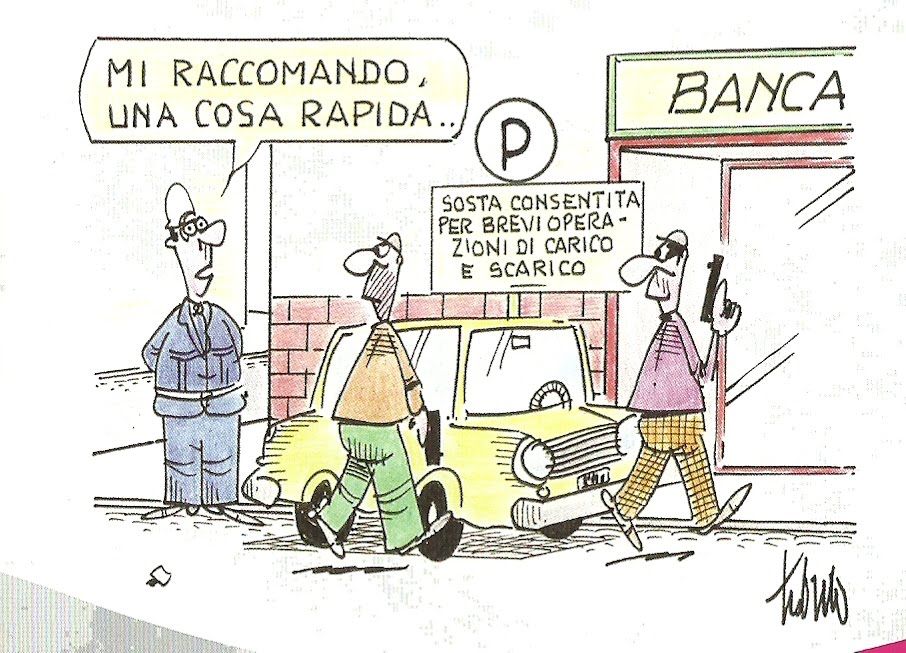At the Bank in Italy Posted by Serena on Nov 13, 2015 in Culture, Italian Language
The setting: In a bank in Italy
The characters: A bank employee and a prospective client.
Impiegata: “Buongiorno. Come posso esserle utile?”
Employee: “Good morning. How can I help you?”
Cliente: “Buongiorno, sono la signora Santini, vorrei chiedere informazioni sull’apertura di un conto corrente”
Client: “Good morning, my name is Ms. Santini, I’d like some information about opening a current account”
Impiegata: “Si accomodi, prego. Mi dica, ha un reddito regolare? Uno stipendio, una pensione da accreditare sul conto?”
Employee: “Please, have a seat. Do you have a regular income? A salary, or a pension to be paid into the account?”
Cliente: “Sì, ho una rendita mensile”
Client: “Yes, I have a monthly income”
Impiegata: “Benissimo, in questo caso possiamo fare la domiciliazione delle bollette, così non deve pagare il deposito cauzionale”
Employee: “That’s good, in that case we can set up a direct debit for your bills, so you won’t have to pay a deposit”
Cliente: “Ci sono spese sul conto corrente?”
Client: “Are there any fees for the current account?”
Impiegata: “C’è un bollo trimestrale di 8 euro per conti superiori ad una certa cifra, e poi le spese per la corrispondenza cartacea. Se invece ha una mail, non ci sono spese postali”
Employee: “There’s a quarterly tax of 8 Euro for accounts above a certain amount, and then the fees for the (paper) mail. If you, on the other hand, have e.mail, there are no postal expenses”
Cliente: “Ho il bancomat?”
Client: “Do I get a debit card?”
Impiegata: “Sì, ha il bancomat con il PIN. Può prelevare fino a 250 euro al giorno dal bancomat, altrimenti deve andare allo sportello con un documento di riconoscimento e il numero di conto corrente”
Employee: “Yes, you’ll get a debit card with the PIN. You can withdraw up to 250 Euro per day from the cash machine, otherwise you’ll have to go to the cashier with an identity document and the number of the current account”
Cliente: “E per ritirare del contante si paga una commissione?”
Client: “And to withdraw cash do I have to pay a commission?”
Impiegata: “Se ritira da una qualunque filiale della nostra banca non le costa niente, se usa un’altra banca allora deve pagare la commissione”
Employee: “If you withdraw from any of our branches it’s free, if you use another bank then you’ll have to pay a commission”
Cliente: “E per ricevere o spedire soldi?”
Client: “And what about receiving or sending money?”
Impiegata: “Per ricevere soldi le serve il codice IBAN che contiene le coordinate della banca. Per mandare soldi può fare un bonifico bancario, che ci mette 3 giorni lavorativi ad arrivare, oppure può usare il libretto degli assegni”
Employee: “To receive money you’ll need the IBAN code which contains the coordinates of the bank. In order to to send money you can do a money transfer, which takes 3 working days to arrive, or you can use the chequebook”
Cliente: “Va bene, procediamo all’apertura del conto”
Client: “OK, let’s go ahead and open the account”
Impiegata: “Mi da un documento di riconoscimento e il codice fiscale?”
Employee: “Can I have an identification document and your National Insurance Number?”
Cliente: “Ecco la mia carta d’identità e il codice fiscale”
Client: “Here are my identity card and my NI number”
Impiegata: “Adesso ci sono da fare un po’ di firme. Ecco, metta una firma qua, e una qua, e … ecc.”
Employee: “Now there’s a lot of signing to do. Here, put a signature here, and one here, and … etc.”
Cliente: “Basta così?”
Client: “Is that all?”
Impiegata: “Sì, ecco a lei la sua copia del contratto. Arrivederci signora Santini”
Employee: “Yes, here’s your copy of the contract. Goodbye Ms Santini”
Carmela Santini: “Allora, andiamo a fare un sopralluogo dei negozi di calzature … ”
Carmela Santini: “Right, let’s go and check out a few shoe shops … ”
See also: Carmela’s Story Part One

Build vocabulary, practice pronunciation, and more with Transparent Language Online. Available anytime, anywhere, on any device.






Comments:
Allan Mahnke:
Thanks! This is great. One small thing for American readers: We call a conto corrente a checking account. We and the British are once again “two peoples separated by a common language.”
Geoff:
@Allan Mahnke Thanks for the info Allan, you are promoted to official English UK to English US translator! 🙂
Jane bowden:
So, does ‘bancomat’ mean both direct debit card and ATM machine?
Serena:
@Jane bowden Salve Jane! Yes, the word ‘bancomat’ means both a direct debit card and an ATM machine.
Saluti da Serena
Patricia Sandler:
Molto utile. Quasi due anni fa, ho aperto un conto per corrispondenza in Italia. Direi che le cose cartecei erano un po’ sgomberate.
Geoff:
@Patricia Sandler Altro che! 😉
Chippy:
Ah! Cosi` Carmela non e` andata via!!
Per favore, cosa significa ‘sgomberate’ (Patricia sopra) – outmoded?
Geoff:
@Chippy Well spotted Chippy. Non ti preoccupare, la sua storia continuerà!
sgomberate … boh! Penso che voleva dire ingombrante (cumbersome). Il verbo sgomberare ha il significato di ‘clear out the clutter, or move something out of the way’ e.g. sgomberare il passaggio = clear the way
Saluti da Geoff